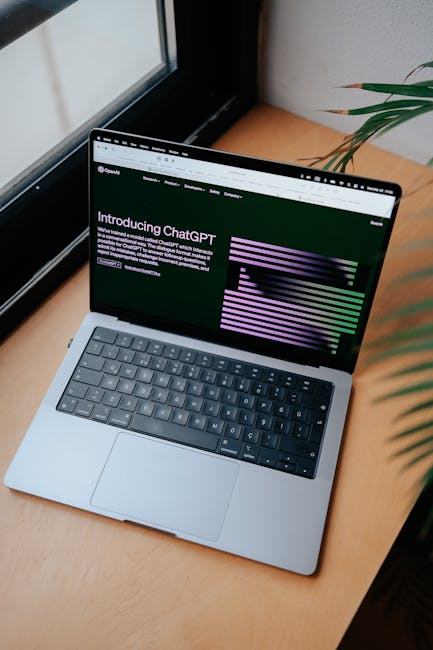PLANNING WHAT TO eat might crack the top three of Things About Adulting I Hate.
There’s so many criteria to check off when it comes to meal planning. Is the food nutritious? Am I going to have time to make it? How many dishes am I going to have to do? Do I have all the necessary equipment? Ingredients? Is it going to make too much? Too little? Am I even going to like it?
It’s wild to me that I need to do this three times a day. Seven days a week. That’s 21 times a week I have to know exactly what I want. I don’t even know what to ask for for my birthday most years.
My general menu follows that fill-in-the-blank portion plate we all had in elementary school. Fill in the section for a protein, a carb, and a veggie, then add some seasoning and sauce to make it not taste like cardboard. It’s no Iron Chef winning dish, but it gets the job done.
I can admit, though, this rotation gets old after awhile. The science-enthusiast in me decided to conduct an experiment. Everyone around me is talking about how they’re using artificial intelligence to write cover letters, proofread assignments, even find a date (yikes). I wondered if it could help me fix one of the biggest pain points in my own life.
I gave good ol’ ChefGPT a shot, and let it plan my meals for two weeks. Here’s what happened, what I learned, and how you can better use it for your nutrition needs, too.
Week One
ONE THING ABOUT me: I’m not a picky eater. So I might have been a pretty easy client for my new found robot nutritionist.
I had only a few criteria for my meal plan.
One, make them easy. I have a tiny NYC kitchen—I own one pot, one pan, and a Crockpot from 2004. My lack of space, equipment, and talent, means I’m a number one consumer of microwavable rice and Trader Joe’s frozen shrimp stir fry (which slaps, by the way).
Two, prepare for leftovers. It’s just me in my household, so I am constantly tossing out meals that I made too much of because I got tired of them. And yes, I’ll say it—not everything should be saved for leftovers. Ever enjoyed a Cobb salad after it’s marinated for the night? Doubt it.
Three, it needs to be high in protein. I am securely fastened to my seat on the high-protein train, and have no intention of getting off anytime soon. I try to hit at least 40 grams of protein in at each meal, and fill my remaining needs with protein bars or powders in between. But, my stomach can’t handle too much red meat, and I still want to make sure I’m getting my veggies in—it can’t be all protein.
Four, no tofu. Ever. Under any circumstances.
Sounds like a lot of asks, but it’s really not that much when you think about how most people have allergies or intolerances to worry about, families to feed with different preferences to consider, food availability considerations, and budgetary restraints. I thought my requirements were relatively reasonable.
ChefGPT thought so, too, and spit out a full week’s worth of lunches and dinners as quick as an AI can. On its first attempt, nothing about the meal plan was my definition of ‘high in protein’—which, remarkably doesn’t have a definition, so not entirely ChefGPT’s fault. I should’ve been more clear and given it a specific target of 40 grams of protein per meal.
Also, it gave me 9(!) different meals. Only one lunch considers leftovers, and not a single dinner. I would not be able to fit this many groceries, nonetheless ingredients, into my NYC-apartment-sized fridge.
So, I tried again. This time, asking for higher protein and to consider leftovers. Here’s what it spit out.





Tofu. I could’ve thrown my whole laptop away. And, 7 full recipes still seemed like an absurd amount of food for one person for a week.
I’m being harsh. Obviously my friend didn’t calculate the leftovers as much as I wanted it to, but it still was providing some solid guidance. I gave it the benefit of the doubt, asked it to omit 3 out of the 7 recipes, and spit out a grocery list.
I then sent it another list of the stuff I already had, and asked it to pull those out of the supplied grocery list. Upon doing so, it also omitted 3 things I didn’t say I had, including the salmon and the tuna, main staples of two meals. I can’t come down on it too hard, though—it wouldn’t be the first time I’ve forgotten something on a grocery list.
And it certainly wouldn’t be the last. I copied the grocery list into a note on my phone, added those back in, headed to the store, and started cheffing it up.
Week 1 Takeaways
A FEW THINGS: Obviously, if I trusted ChefGPT fully and hadn’t clocked the accidental omissions, I would have had to head back to the grocery store to repair the mistakes I’d made. So it’s a good thing I double checked my list.
One of the best parts about this experience was the ease of gathering info. Every time I want to meal prep with recipes I haven’t tried yet, I end up tangled in a web of Pinterest pins and NYT Cooking links randomly pasted into my notes. My self-made grocery lists are often more inaccurate than the one ChefGPT left me. So was it really such a crime that it omitted a few extra ingredients?
And, when I was ready to cook a meal, all I had to do was revisit my handy chat history, ask for the recipe, and there it was. No cycling through my notes app and Pinterest boards.
The recipes proved to be pretty easy, quick, and tasty. Were they the best meals I’ve ever had in my life? No. But they certainly weren’t the worst.
Week Two
LET’S UP THE challenge.
As I said prior, I’m a pretty easy-to-please eater. Let’s pretend I’m not for a week.
I came up with an alter-eating-ego (inspired by an ex-boyfriend, who hated just about everything). I kept my criteria and added a few more. I made sure I was super nice about my newfound preferences—ensuring I’m on ChefGPT’s good side for when it takes over the world). Here’s what it spit out:



Not bad, but eerily similar to Week One (veggie bowls, lentil, sweet potatoes, black beans, curry…all very familiar bases).
Week 2 Takeaways
I WAS MORE optimistic about Week Two after being pleasantly surprised with my results Week One. But, the blandness of all the food started to get to me this go-round.
The chicken and zucchini dish with users-choice herbs did me in. I’m (clearly) the opposite of a chef…I have no clue what compliments what and how to season beyond my pre-blended Cajun, Greek, Jerk, Moroccan, Italian, taco, curry, and steakhouse mixes sitting in my spice cabinet. I selected the Cajun seasoning and called it a day.
It wasn’t bad, per se, it just wasn’t great. Which made me want my leftovers even less. Which made me toss a bit of extra food that just couldn’t stomach for a third day in a row. Which made me feel guilty.
Otherwise, week two went well. I knew to double check the ingredient list. I appreciated the easiness of the recipes. But, the meals themselves were just okay.
The Bottom Line:
THERE ARE ABOUT as many benefits as there are downfalls to using ChatGPT as your own personal meal planner. It’s usefulness boils down to your specific eating preferences and needs.
If you hate making food-related decisions as much as me, ChatGPT is not a bad option—I genuinely enjoyed having it make my decisions for me. The plan was succinct, simple to follow, affordable, and all bundled together in the same spot for easy reference (a benefit I really appreciated).
But, you might not enjoy it as much as me if you’re super into cooking and trying new things. There’s space to play with flavors and toppings, sure, but none of these meals will be life-changing recipes that you pass on from generation to generation.
But, they’ll be quick, easy, and make enough to last. And, with the right seasonings and an experimental attitude, you’re can definitely liven up these dishes and make them your own. Or, only use ChatGPT to help you select a small amount of meals per week, and fill in the rest with stuff you really want.
If you have a lot of dietary restrictions, or are eating for a certain goal, it’s definitely better to work with a registered dietitian to ensure your meal plan matches your needs. ChatGPT is certainly not a replacement for a true health professional.
Overall, I probably won’t end up using my new found artificial friend to plan what I eat every week—but I will definitely use it as a tool for when picking what to eat becomes too much to handle.
Cori Ritchey, C.S.C.S., is an Associate Health & Fitness Editor at Men’s Health, a certified strength and condition coach, and group fitness instructor. She reports on topics regarding health, nutrition, mental health, fitness, sex, and relationships. You can find more of her work in HealthCentral, Livestrong, Self, and others.



